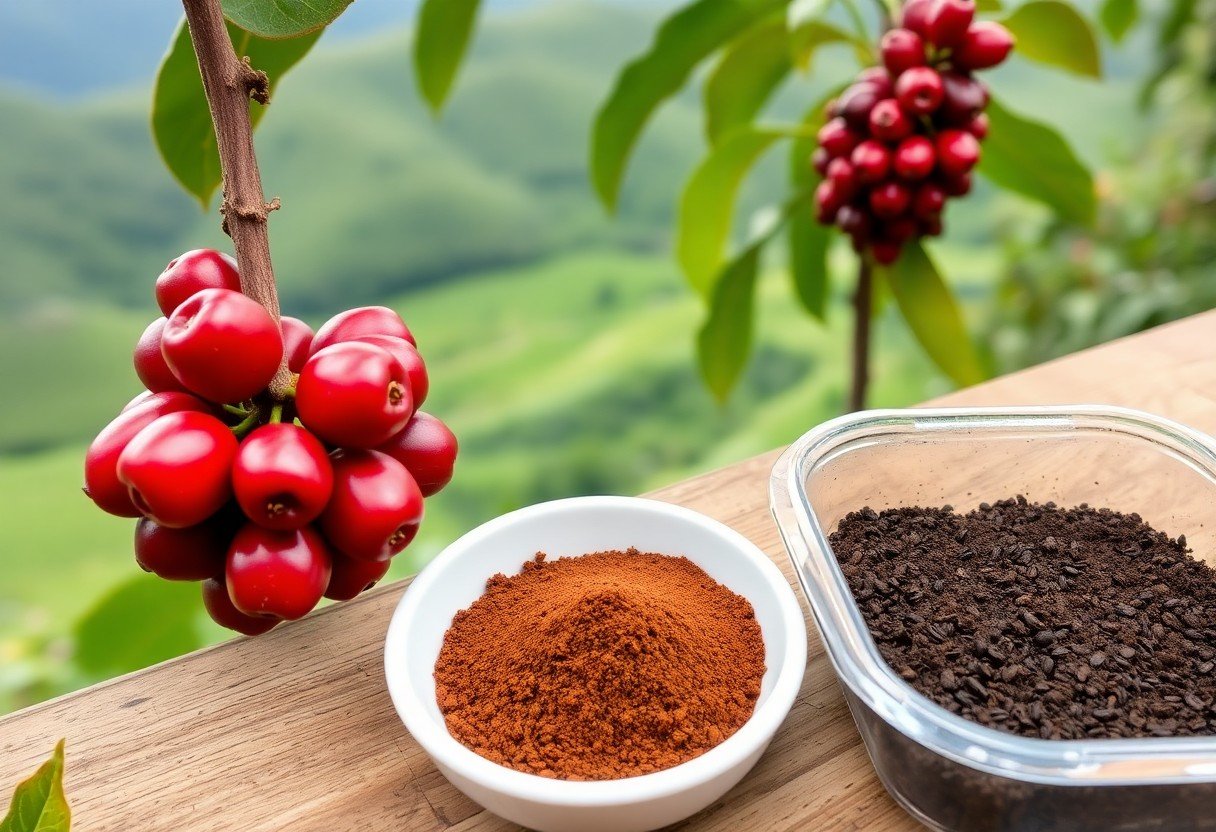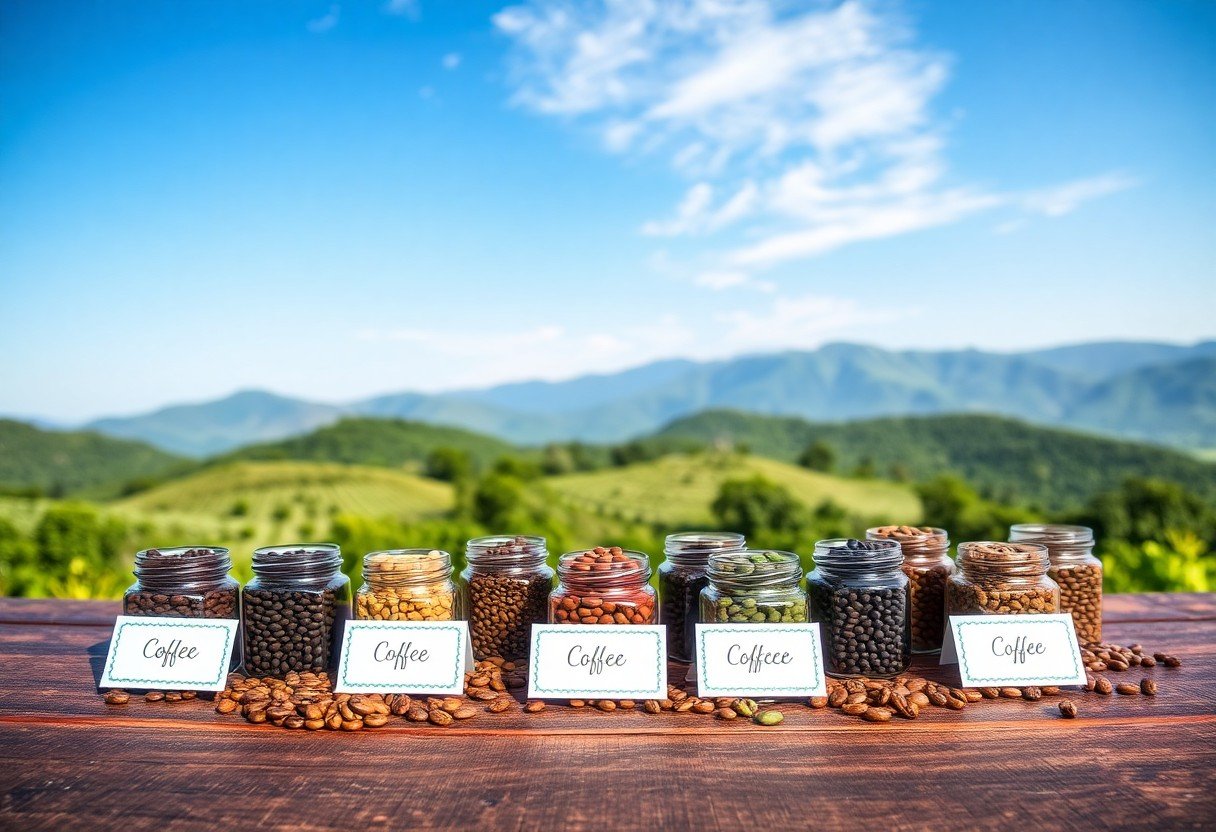With an increasing interest in coffee quality and origin, understanding the role of terroir in shaping flavors is necessary for any coffee enthusiast. You may wonder how factors like soil, climate, and altitude influence the taste profiles of your favorite brews. This post explores the intricate relationship between terroir and coffee, revealing how these elements contribute to the uniqueness of each cup you savor.

The Essence of Terroir in Coffee
Terroir embodies the intricate interplay of environmental factors that shape the unique characteristics of coffee. This concept extends beyond mere location, encompassing climate, soil composition, altitude, and even local agricultural practices. The result is a distinct flavor profile that reflects the specific conditions under which the coffee was cultivated, allowing you to taste a region’s history and ecology in each cup.
Defining Terroir: More Than Just Geography
Terroir encompasses a complex web of influences extending beyond geographical location. While altitude and climate are fundamental, you must consider factors like local culture, farming methods, and even the varietals grown. Each element contributes to how the coffee beans develop their flavor, ultimately shaping your tasting experience.
Components of Terroir That Influence Flavor Profile
Several critical components of terroir contribute to coffee’s flavor profile, including altitude, microclimate, soil type, and rainfall patterns. Each factor plays a role in determining the growing conditions, influencing attributes such as acidity, sweetness, and body. For example, high-altitude coffee often features enhanced acidity and floral notes, whereas beans grown in rich volcanic soil may exhibit deeper, fruitier flavors.
Altitude significantly affects ripening periods and growth rates, impacting flavor nuances. In areas like Colombia, coffee grown at over 1,700 meters often develops a cleaner profile with elevated acidity. Soil type, such as the nutrient-rich volcanic soils of Kona, can lead to pronounced flavor dimensions. Additionally, microclimates create variations even within small regions, allowing diverse flavor notes to emerge based on subtle environmental shifts. Understanding these components enriches your appreciation of coffee and the depth of flavor that terroir brings to your cup.

Botanical Diversity: The Role of Coffee Varietals
Coffee varietals significantly influence flavor profiles and characteristics, amplifying the impact of terroir. Varietals like Arabica and Robusta showcase distinct tastes, with Arabica often featuring nuanced flavors and acidity, while Robusta tends to be bolder and earthier. Exploring these varietals helps you appreciate how different growing conditions sculpt the sensory experience of each cup.
Understanding Arabica vs. Robusta: A Taste Comparison
Taste Comparison
| Arabica | Delicate, fruity, often floral with higher acidity |
| Robusta | Strong, earthy, often bitter with lower acidity |
How Local Varietals Reflect Their Terroir
Local varietals, nurtured in specific geographies and climates, mirror the distinct characteristics of their terroir. Factors such as altitude, soil composition, and microclimate influence how varietals express their flavor profiles. For instance, coffee grown at high elevations typically has brighter acidity and complex flavors, while varieties cultivated in richer soils may reveal deeper, richer notes. These local expressions help you connect with the nuanced flavors and aromas that each coffee embodies.
In regions like Ethiopia, heirloom varietals thrive in diverse microclimates, resulting in extraordinary flavor ranges that reflect local conditions. For example, coffees from Yirgacheffe exhibit floral and citrus notes, while Sidamo varietals might offer more berry-like characteristics. This specificity underscores how the conditions shaped by terroir and varietal choice contribute to a coffee’s overall taste. By understanding these local variabilities, you gain a deeper appreciation for the art of coffee cultivation and the story behind your brew.
The Science Behind Soil Composition and Coffee Taste
Soil composition profoundly influences coffee flavor by affecting nutrient availability and water retention. The presence of specific minerals shapes the biochemical processes in coffee plants, contributing to their unique taste profiles. Variations in soil pH, texture, and organic matter can lead to distinguishable differences in the aroma and flavor profile of coffee beans. Thus, understanding soil science provides critical insights into the cultivation of high-quality coffee.
Soil Types: Mineral Influence on Flavor
Coffee flavor is significantly impacted by the minerals present in the soil. Different soil types contain varying levels of key minerals, affecting the taste of the final brew. Here are some notable influences:
- Clay-rich soils enhance water retention, affecting sweetness.
- Sandy soils promote drainage, leading to brighter acidity.
- Volcanic soils often yield more complex flavor profiles.
- Iron and magnesium levels can amplify certain taste notes.
- Thou shall explore the latitude of growing conditions for optimal taste.
| Soil Type | Impact on Flavor |
| Clay | Enhances sweetness due to water retention |
| Sandy | Bright acidity from excellent drainage |
| Volcanic | Complex flavor profiles from rich minerals |
| Limestone | Brings out citrus notes and brightness |
Organic vs. Inorganic: The Debate Over Fertility
The choice between organic and inorganic fertilizers sparks ongoing debate among coffee growers. Organic methods focus on natural materials and sustainable practices, often resulting in healthier soil and potentially superior flavor. In contrast, inorganic fertilizers can provide quick nutrient boosts but may lead to long-term soil degradation. Each approach carries distinct implications for flavor, health, and environmental impact, making the decision complex.
When examining organic versus inorganic practices, studies show that coffee grown with organic fertilizers yields beans with more pronounced flavor complexities. For example, organic methods often enhance the microbial diversity of the soil, promoting a more robust nutrient cycle. Conversely, while inorganic fertilizers can deliver targeted nutrients quickly, they risk nutrient leaching and potential soil health issues over time. Balancing short-term productivity with long-term sustainability is vital for cultivating exceptional coffee.
Climate’s Impact on Coffee Flavor Profile
The climate in which coffee is grown significantly influences its flavor profile. Factors such as temperature, altitude, and rainfall determine the beans’ development, affecting acidity, sweetness, and body. Each coffee-growing region, with its unique climate, produces distinct flavor notes that showcase the coffees’ origin.
Temperature and Altitude: The Flavors of Elevation
Higher elevations typically result in cooler temperatures, which slow the maturation of coffee cherries, allowing for the development of more complex flavors. As temperatures decrease with elevation, acidity often increases, producing vibrant and fruity profiles that are highly sought after in premium coffees.
Temperature and Altitude Effects
| Elevation | Flavor Characteristics |
|---|---|
| Below 600 meters | Low acidity, heavier body, earthy flavors |
| 600-1200 meters | Balanced flavor, medium acidity, fruity notes |
| Above 1200 meters | High acidity, floral notes, complex flavors |
Rainfall Patterns: Wet vs. Dry Processing Effects
Rainfall patterns play a vital role in determining how coffee is processed, directly impacting flavor. In regions with consistent rainfall, wet processing is common, enhancing the acidity and clarity of coffee. Conversely, dry processing, often used in drier climates, can impart a heavier body and more pronounced fruitiness, resulting in varied flavor profiles.
Wet processing relies on abundant water for fermenting the beans, helping to highlight bright and clean flavors. In contrast, dry processing allows coffee cherries to naturally ferment on the ground, which enhances body and richness but can lead to inconsistent flavors. For example, Ethiopian coffees, frequently dry-processed, often exhibit bold, fruity profiles, while Central American wet-processed beans are known for their crispness and clarity. Understanding how rainfall influences processing methods helps you appreciate the diverse flavors that can emerge from different coffee-growing regions.
The Human Element: How Culture and Tradition Shape Taste
Your coffee’s taste isn’t shaped solely by its environment; the cultural practices and traditions surrounding coffee cultivation and preparation play a significant role. From ceremonial brews in Ethiopia to the meticulous selection of beans in Colombia, these local customs infuse the coffee experience with a unique identity. The stories behind each region’s approach to coffee can enhance your appreciation for the drink, emphasizing how cultural factors contribute to flavor depth beyond geography alone.
Brewing Methods: Regional Techniques and their Taste Outcomes
Different regions have distinct brewing methods that profoundly affect the flavor profile of coffee. For instance, the Turkish coffee preparation involves fine grinding and boiling, which results in a rich, thick texture, while the pour-over technique, popular in Japan, offers a cleaner, more delicate taste. Each method accentuates varying flavor notes, allowing you to explore coffee’s vast taste spectrum based on how it’s brewed.
Terroir and Identity: The Stories Behind Coffee Farms
The identity of coffee farms is intricately tied to their terroir, where the land’s characteristics and local traditions converge. Each farm has a unique story, shaped by generations of farmers who cultivate their beans with specific techniques, often passed down through family lines. These narratives impact how you perceive the flavors associated with different coffees, creating a deeper connection to the beverage you enjoy.
To wrap up
Conclusively, understanding how terroi influences the taste of coffee empowers you to make more informed choices in your coffee selection. Your appreciation for coffee deepens as you explore the unique flavors attributed to specific regions and growing conditions. By recognizing the interplay between the environment and the coffee bean, you can enhance your tasting experience and find coffees that truly resonate with your palate.
FAQ
Q: What is terroir in coffee?
A: Terroir refers to the unique environmental factors, including soil, climate, and altitude, that affect the growth of coffee plants and ultimately influence the flavor profile of the coffee beans produced.
Q: How does soil affect the taste of coffee?
A: The mineral composition, pH level, and drainage capabilities of the soil can impart distinct flavors to the coffee beans, contributing to their overall taste. Different soils can lead to variations in acidity and sweetness in the brewed coffee.
Q: Can climate influence the flavor profile of coffee?
A: Yes, climate conditions such as temperature, rainfall, and sunlight exposure play significant roles in the ripening of coffee cherries. These factors can enhance or diminish specific flavor notes, resulting in a diverse range of coffee experiences from different regions.
Q: How does altitude impact coffee flavor?
A: Higher altitudes often lead to slower ripening of coffee cherries, allowing for more complex flavor development. Beans grown at higher elevations typically have increased acidity and brighter flavor profiles compared to those grown at lower altitudes.
Q: Is it possible for coffee from the same species to taste vastly different?
A: Yes, even coffee from the same species can taste vastly different due to variations in terroir. Factors such as the specific location where the coffee is grown, the processing methods used, and local cultivation practices can greatly influence the final taste.

